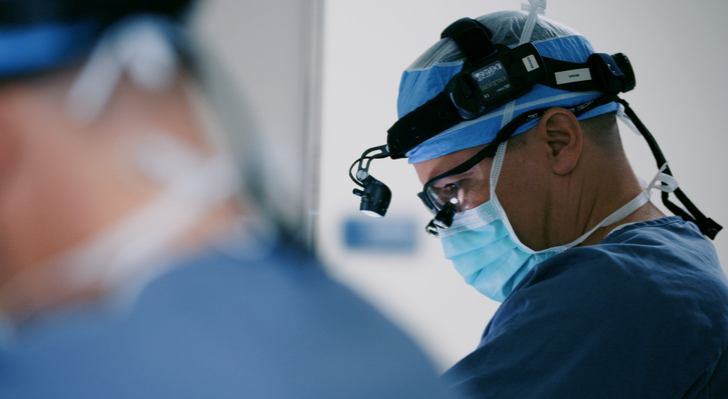7/27/23 news article
Dayton Children’s releases documentary following the unprecedented separation surgeries of exceptionally rare conjoined twins
Boys beat the odds time and time again to be separated in a two-year, multi-surgery process
- In a groundbreaking, unprecedented series of surgeries, twin boys joined at the head were separated successfully.
- This type of connection is one of the rarest conditions; this surgery greatly enriches the slim body of knowledge available on successful separation for this condition.
- Extensive collaboration and planning helped give these boys the chance at more fulfilling and enriching lives.

Dayton Children’s Hospital premieres the hour-long documentary connected: the seemingly impossible separation of Pedro and Augusto, that follows the separation journey of the conjoined twins.
The 5-year-old boys came to Dayton Children’s in July 2021 joined at the top of the head with a 90 degree turn, classified as craniopagus O’Connell class III.
The condition is incredibly rare with an estimated 50 craniopagus twins born every year, with only an estimated 15 of those surviving more than a few months. The boys were separated over the course of two years and four major surgeries and returned home to their native country of Guatemala in June 2023.
“While we all fell in love with Pedro and Augusto during their time here, we are excited for them to return to their home country and culture,” says Ben Goodstein, vice president and chief ambulatory officer. “We will continue to keep an eye on them as their recovery process continues and enjoy their bright future ahead.”
The documentary chronicles the two years that surgeons and staff spent preparing and executing the series of separation surgeries for this rare and complex condition.
The documentary was produced and directed by Flyback Productions, a Chicago-based production company.
watch the trailer
“There is very little research or practical knowledge in medical literature about how to separate craniopagus twins, especially those who are connected at this angle,” says Robert Lober, MD, PhD, pediatric neurosurgeon for Dayton Children’s.
“This documentary shows the real, sometimes overwhelming process of preparation, discovery and decisions that we went through for these boys, hopefully helping others born with this condition in the future.”
“While we prepared diligently, there were still surprises,” says Christopher Gordon, MD, chief of craniofacial and plastic surgery at Dayton Children’s. “Through it all, the boys were incredibly strong and their safety was our utmost concern.”
“The boys will steal your heart with their sweet giggles and dance parties,” says Elise Huntley, certified child life specialist. “They were incredibly strong – and sassy!”
the separation
Less than a third of craniopagus twins survive the first 30 days of life. Pedro and Augusto proved strong in beating those odds, but they were already starting to show signs of medical distress from sharing blood, brain and body functions.
Their family prayed for a way they could be separated, but it didn’t look likely. There have been very few surgeries on this type of connection and very little data available to gauge the likelihood of a successful separation.
After extensive testing, study and review, Drs. Lober and Gordon determined separation would be possible in a series of surgeries. The Dayton Children’s board of trustees agreed to the humanitarian effort that brought the boys to Dayton.
After two years, four surgeries and help from more than half a dozen organizations, the boys were officially separated at 5:43 am on April 8, 2022.
our deepest gratitude
Dayton Children’s thanks the world-class staff who dedicated their skills, minds and hearts to Pedro and Augusto. Our deepest gratitude also goes to the organizations without which this surgery would not have been possible:
- Kettering Health Network
- Hospital Roosevelt, Guatemala City
- The Connor Group
- 3D Systems
- Hologic
- Hope for Home Ministries
The boys begin the next chapter of their lives back home in Guatemala as separate individuals but remain connected to the lives they touched here.
“Pedro and Augusto are forever in our hearts and will always have a second home in Dayton,” says Deborah A. Feldman, president and CEO for Dayton Children’s.
conjoined twin fast facts
The type of connection, the degree of connection, the sex of the children and their age at the time of the surgery make this one of the rarest separation surgeries in the world.
- Only 30% of conjoined twins are male
- Only 1 in 200,000 live births are conjoined twins
- Only an estimated 50 craniopagus conjoined twins are born every year . That’s 5% of all conjoined twins. Normally only 15 live longer than a month after birth



